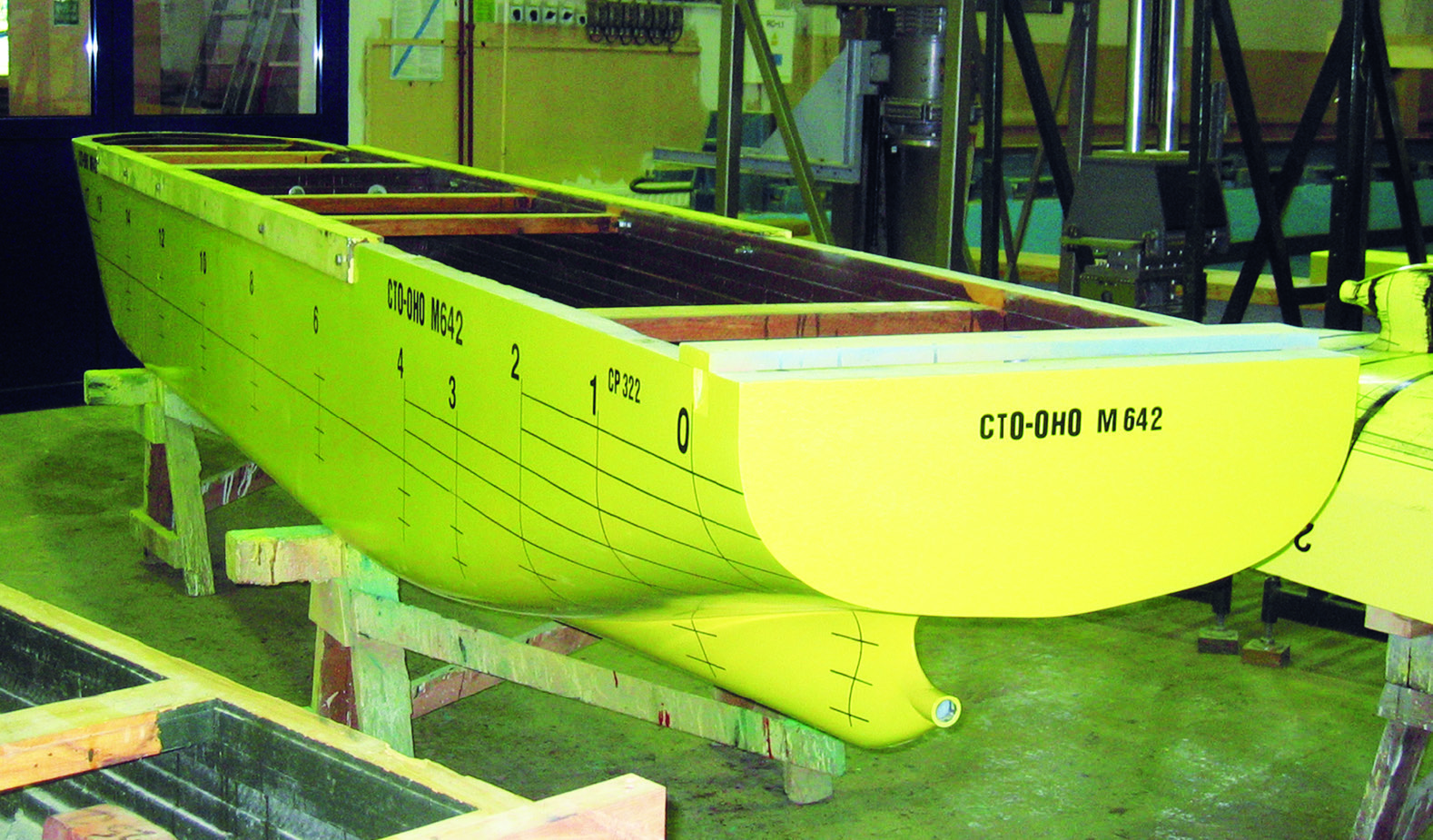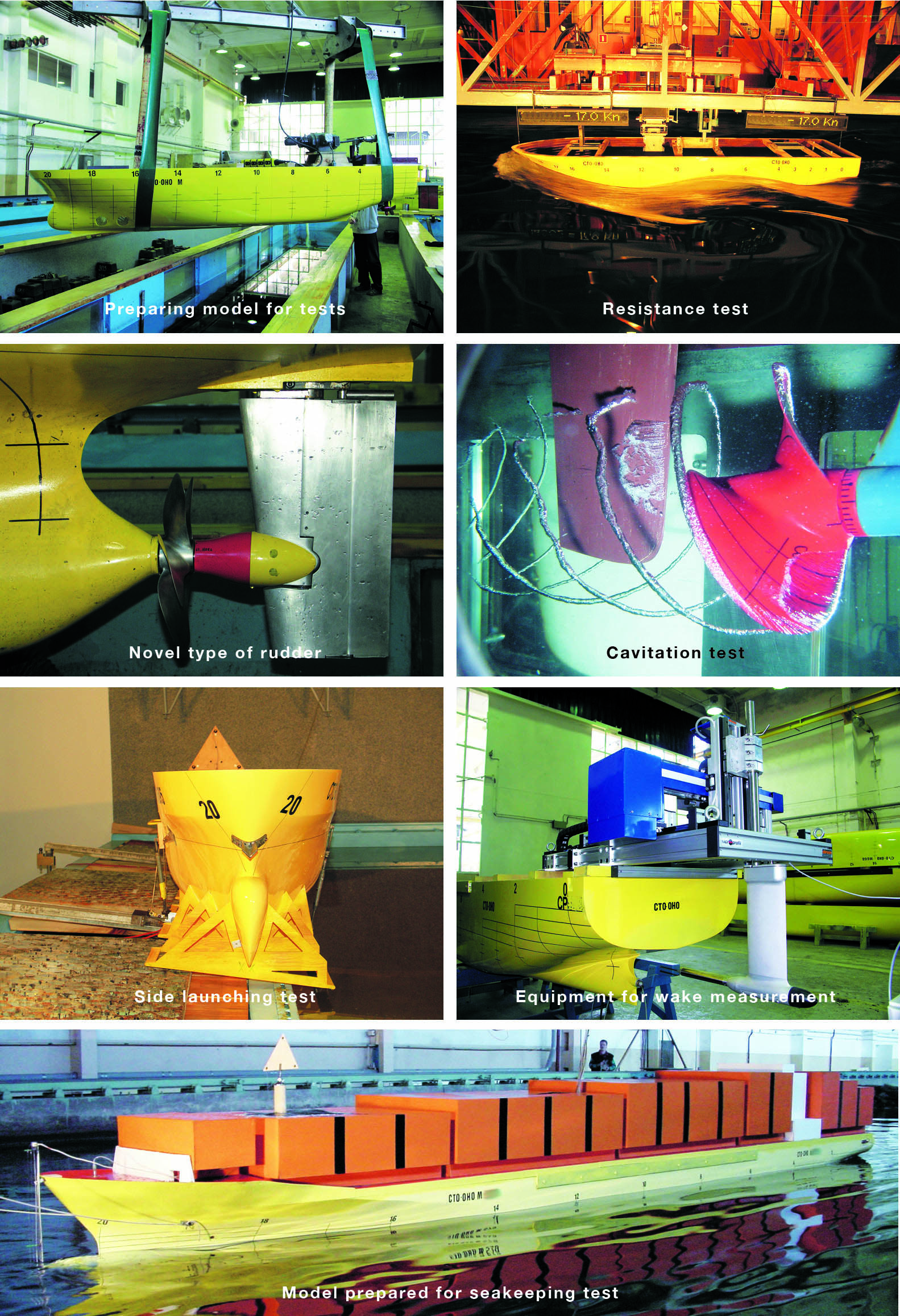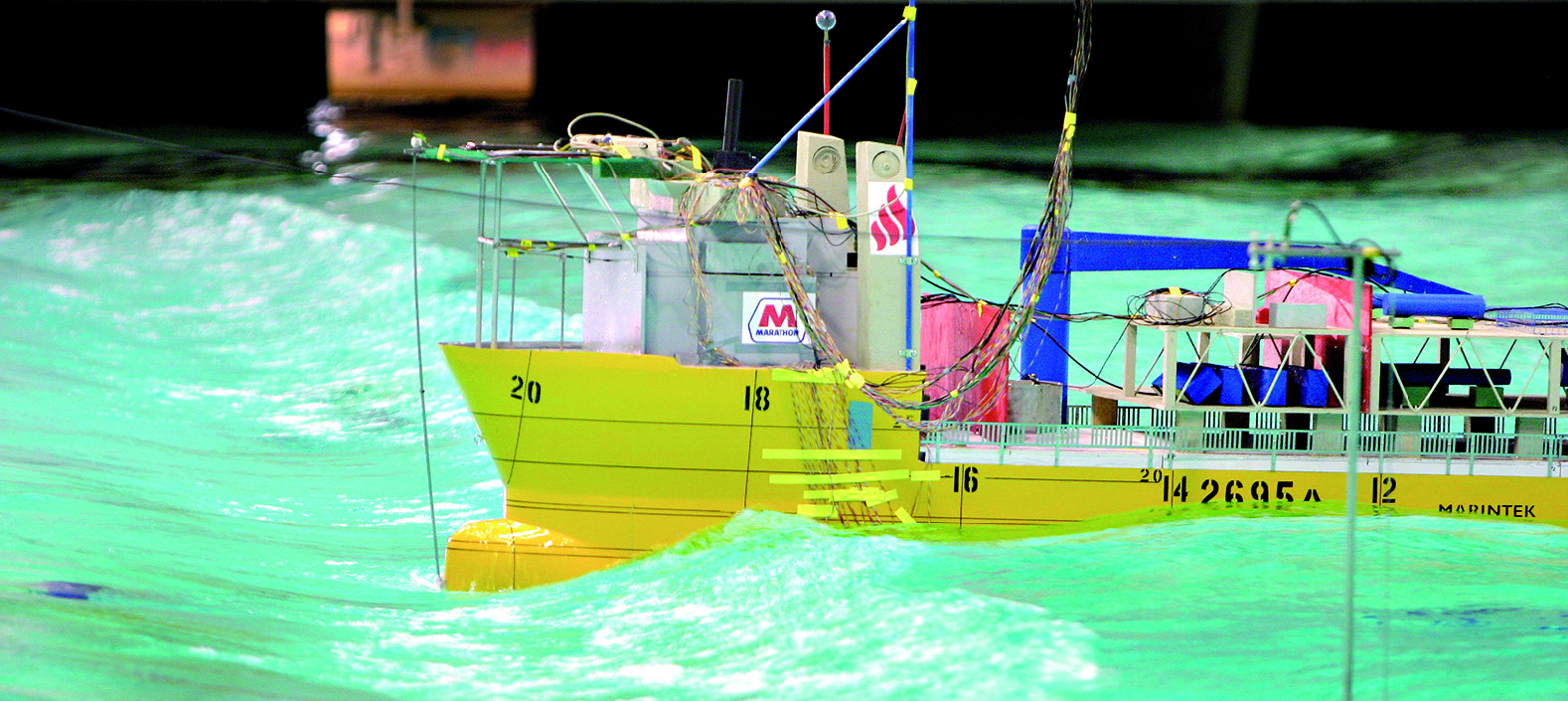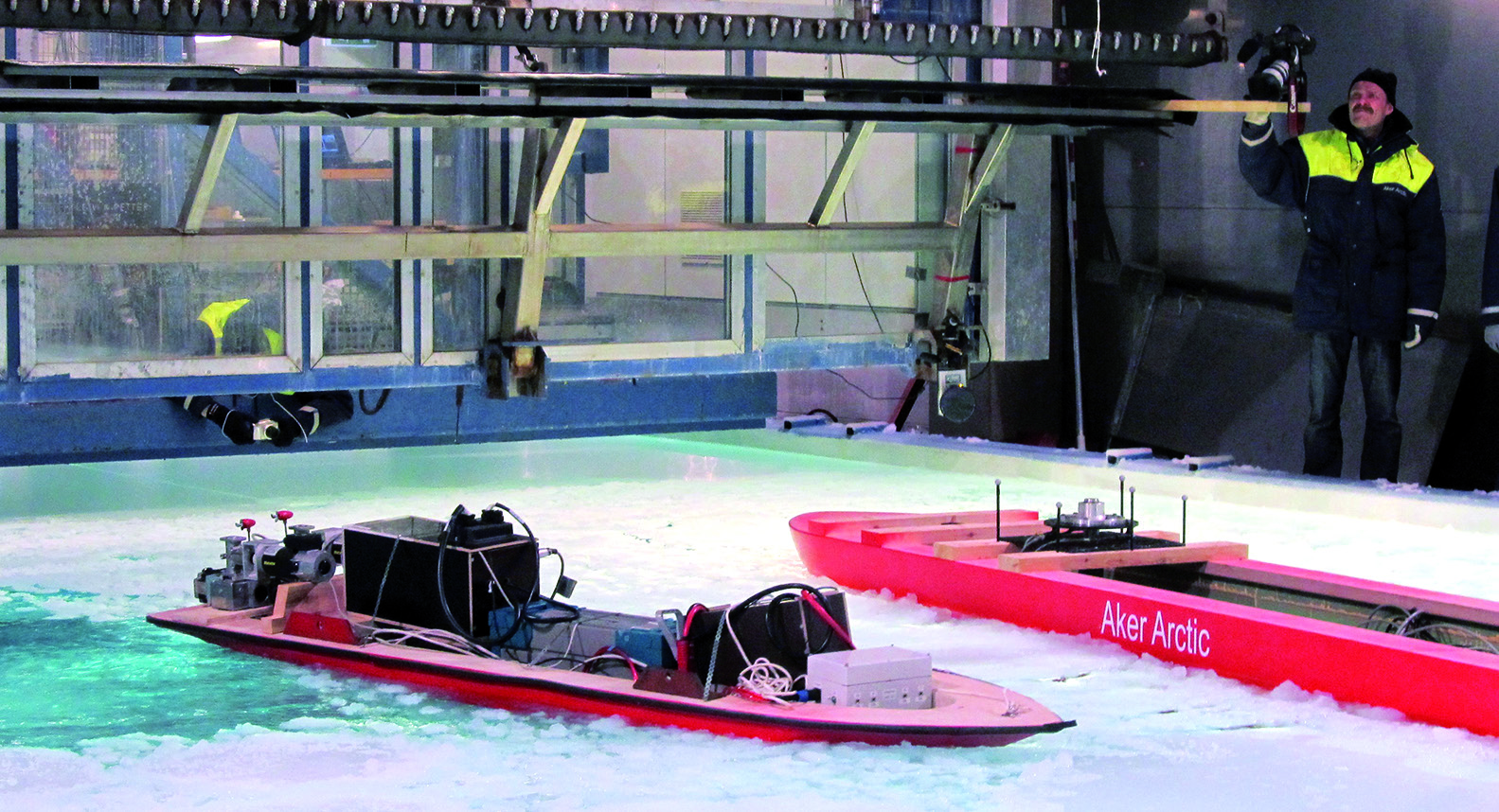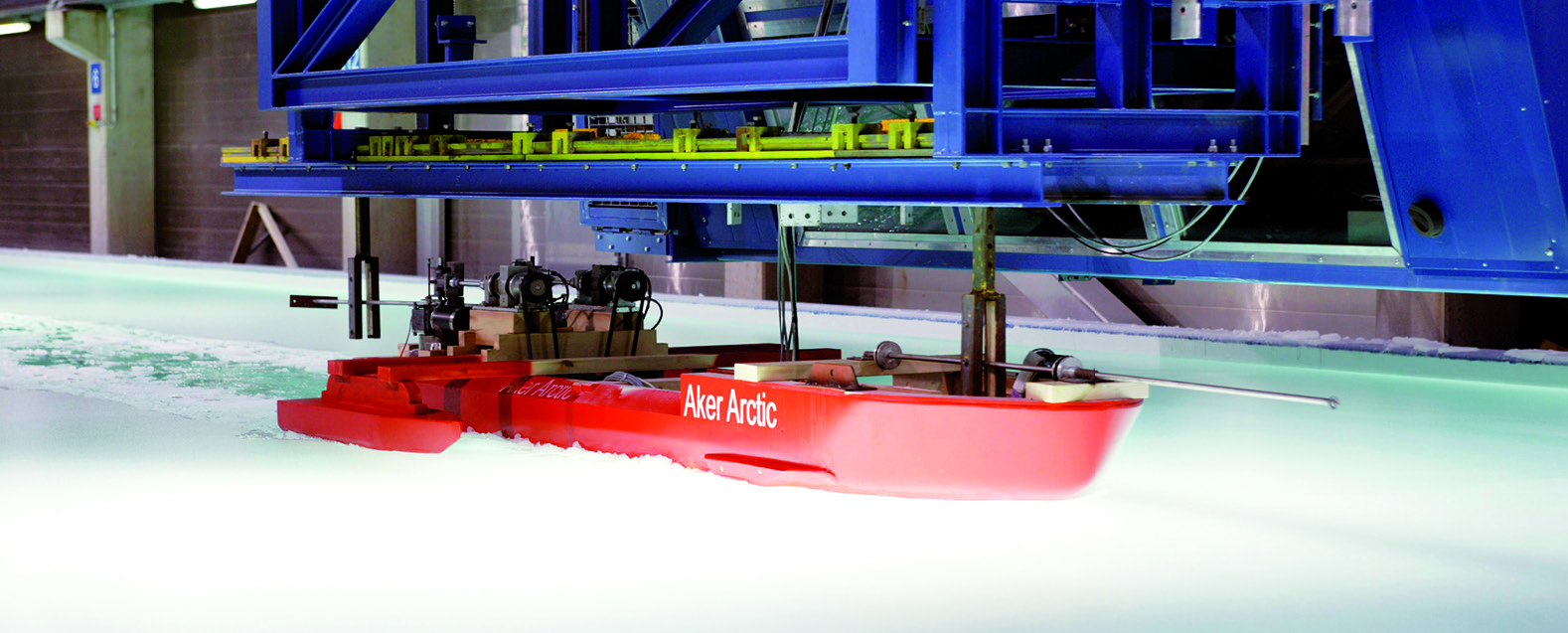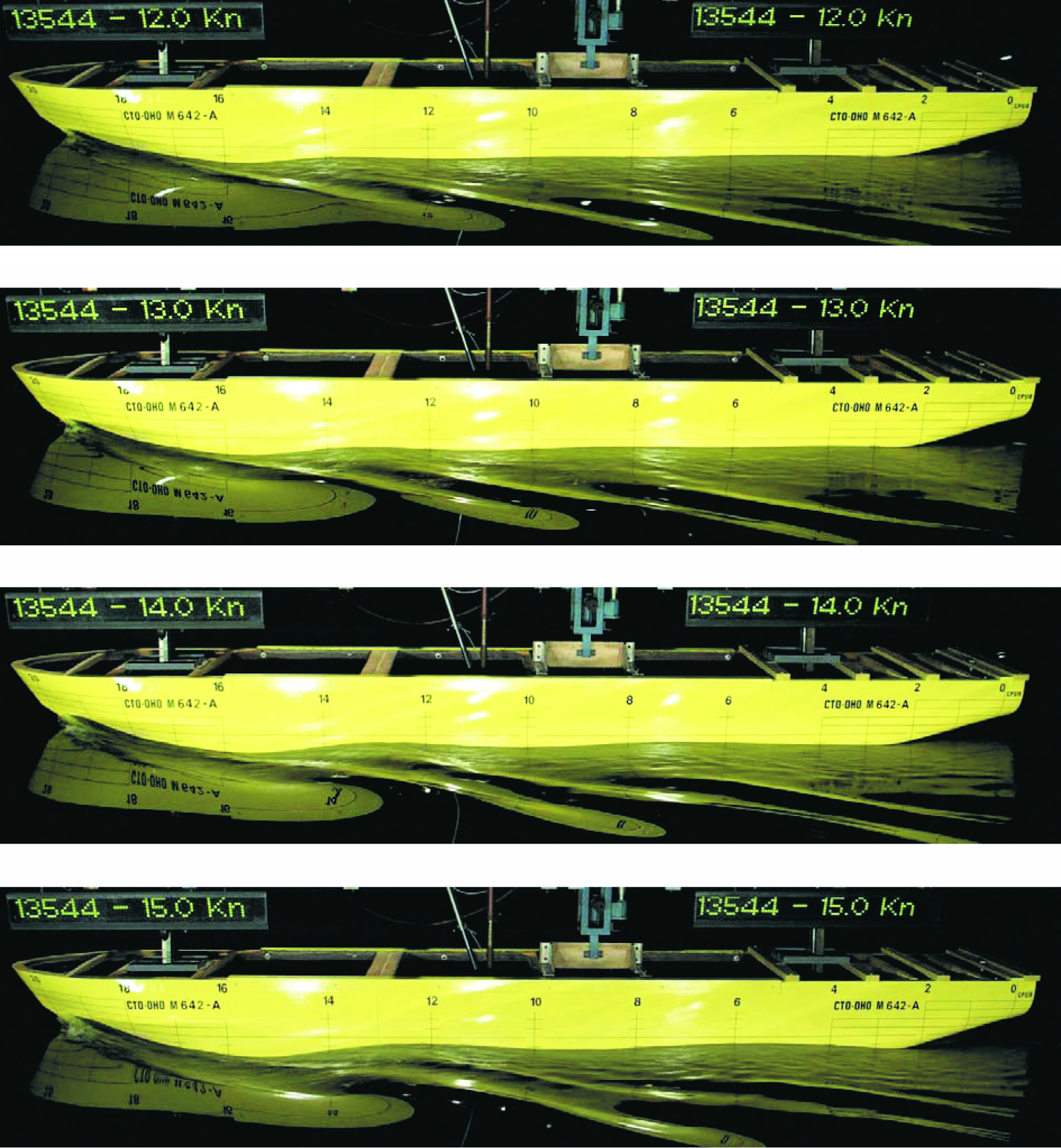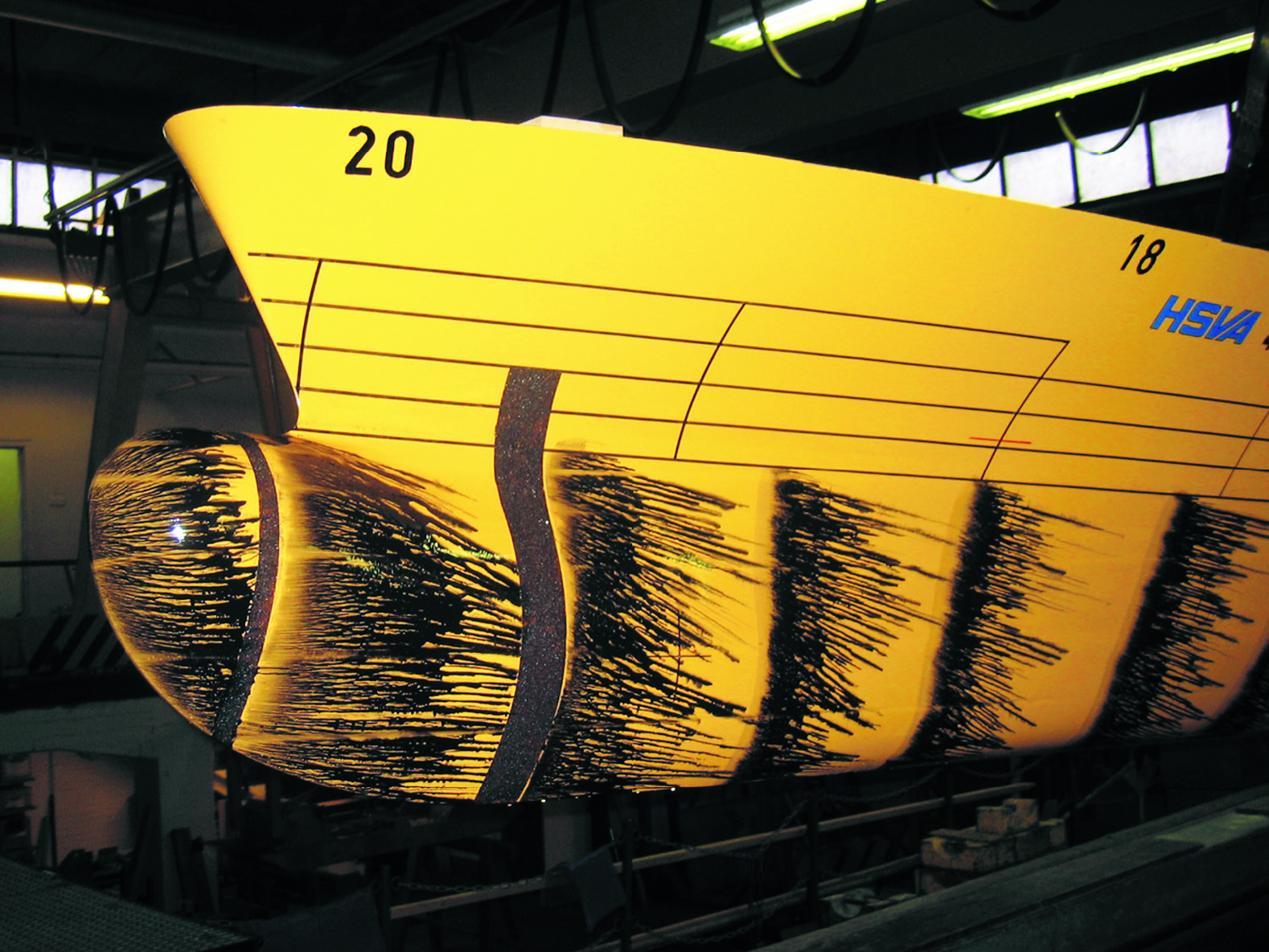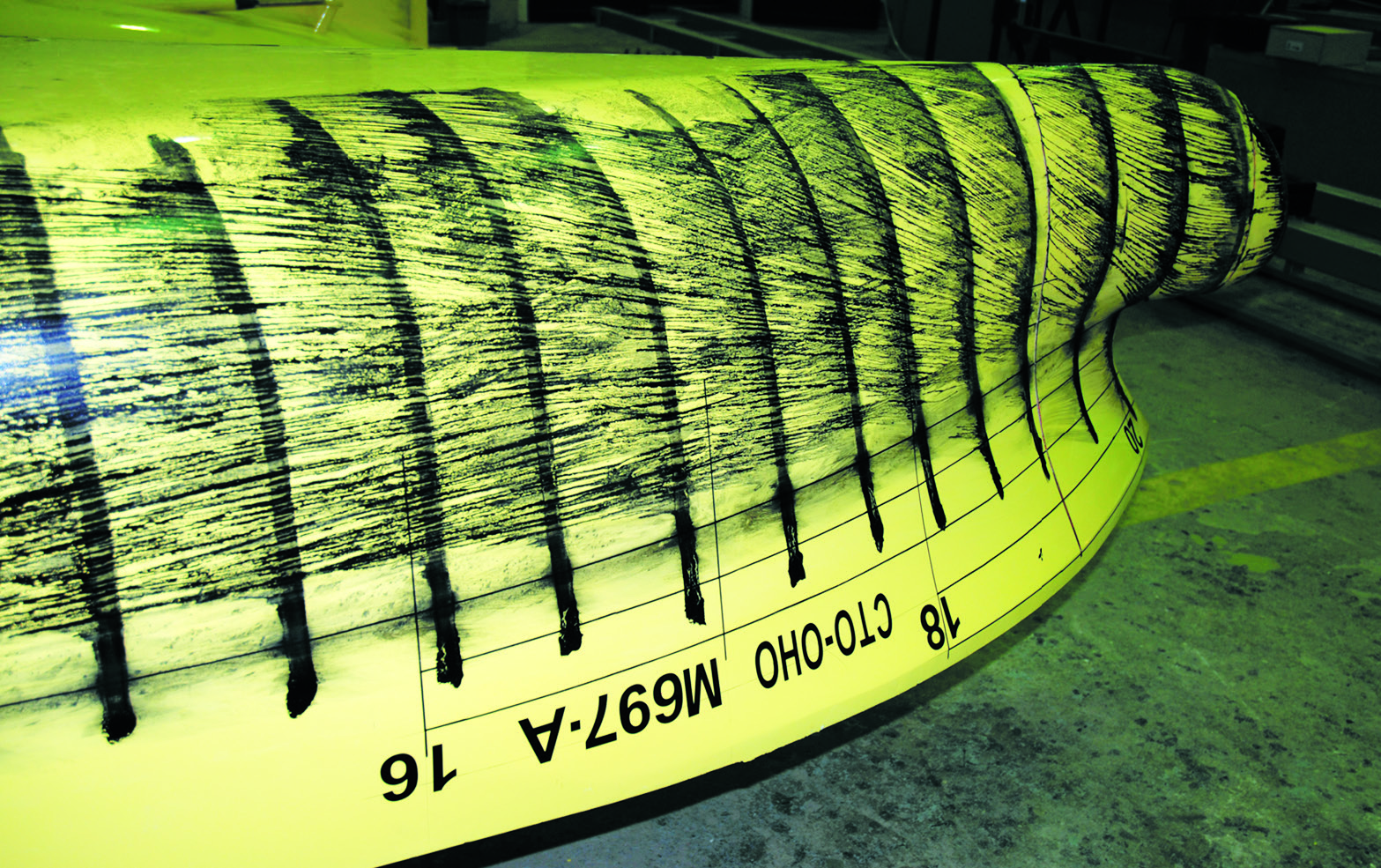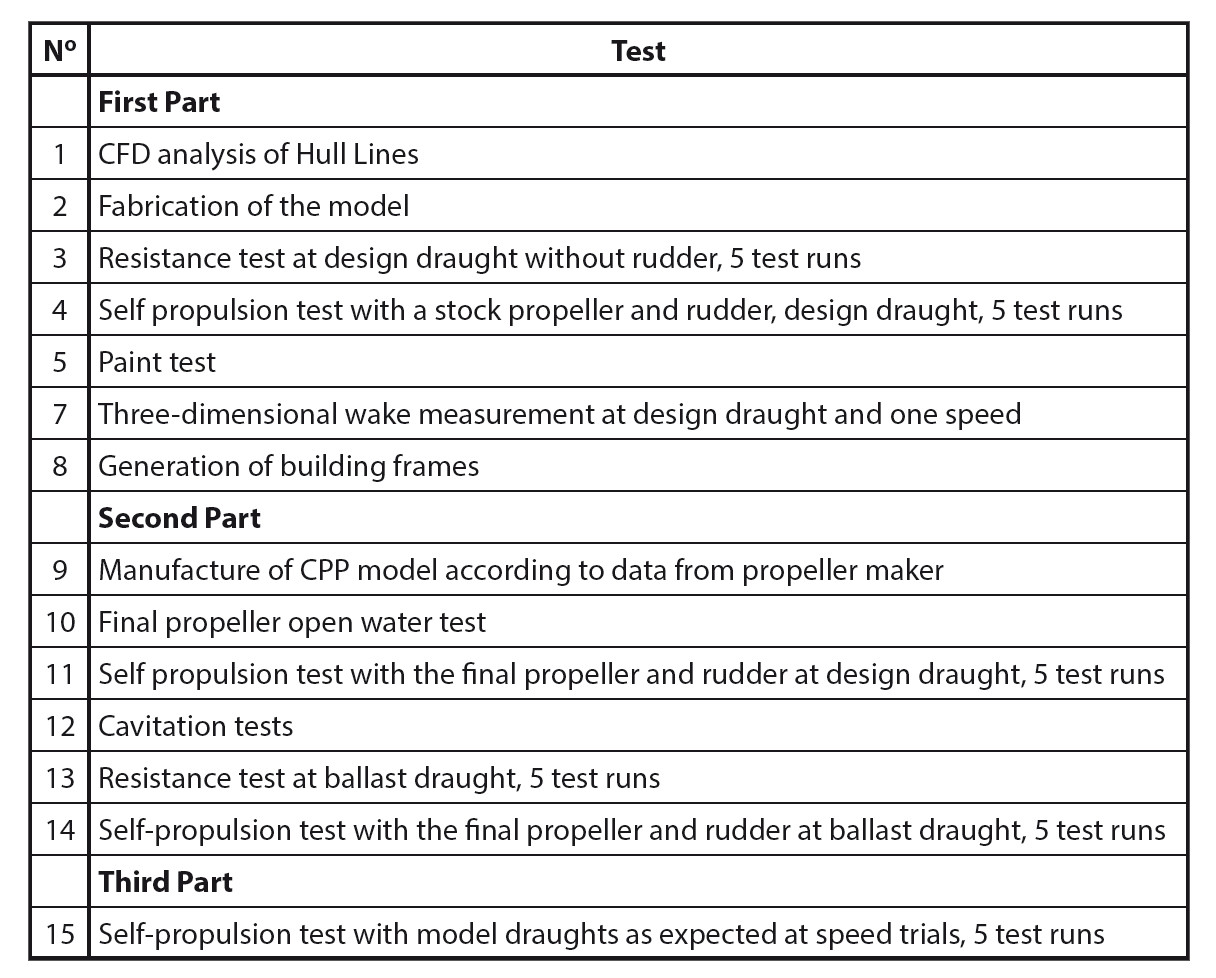

MODEL TESTS
The most comprehensive assessment of power requirements for a new ship is obtained by conducting experiments with a model hull and propeller in a towing tank. Traditional ship model tests provide still more accurate predictions of ship performance than existing computational fluid dynamics (CFD) methods can deliver. Various tests are performed to evaluate ship resistance, propulsion, manoeuvring and seakeeping of all the types of hull forms. Test methodology, post-test analyses and extrapolation to full-scale are guided by ITTC Recommended Procedures; see International Towing Tank Conference.
In order to perform model tests for any ship, it is of course necessary to have a physical ship model to be towed. The model should be as large as possible to minimize viscosity scale effects. However the model can not be too large to avoid effects of restricted water in the test basin. The size of a stock propeller is to be taken into consideration when the scale for a ship model is selected. The material of which the model is made is not important provided the model is sufficiently rigid. Wood, wax, high density closed cell foam and fibre reinforced plastic are used. Models are normally cut from a plan re-drawn from the hull lines submitted for testing. However, building a ship model costs quite a lot, so to avoid waste of money an analysis of hull lines should be carried out first.
Model tests required for a full-scale performance prediction comprise the resistance test, the self-propulsion test and the propeller open-water test.
- Resistance tests – These tests are conducted to provide data from which the resistance of the model, at any desired speed, may be determined. For this purpose the model is towed at speeds giving the same Froude number as for the full-scale ship, and the model resistance and its speed through the water are simultaneously measured. The running attitude of the model, i.e. sinkage fore and aft or the running trim and sinkage are usually measured.
Model should be tested in one or both of the following conditions:
1. Naked resistance of the model without any appendages to determine the resistance coefficients of the basic form.
2. Inclusive resistance of the model to determine the increase in resistance coefficients due to appendages.
Resistance tests are also carried out to measure the nominal wake, i.e. the wake of the ship without the propeller.
Further reading: ITTC Recommended Procedure 7.5-02-02-01
- Self-propulsion tests – In the self-propulsion test, the model is towed at speeds giving the same Froude number as for the full-scale ship. During the test, propeller thrust, torque and rate of propeller rotation are measured. In many cases, stock propellers are used which are selected in view of the similarity in diameter, pitch and blade area to full-scale propeller. Propulsion tests are performed to determine the power requirements, but also to supply wake and thrust deduction, and other input data (such as the wake field in the propeller plane) for the propeller design.
Further reading: ITTC Recommended Procedure 7.5-02-03-01.
Propeller open water test – Although in reality, the propeller operates in the highly nonuniform ship wake, a standard propeller test is performed in uniform flow yielding the socalled open-water characteristics, namely thrust, torque and propeller efficiency.
Further reading: ITTC Recommended Procedure 7.5-03-02-01
The model resistance has to be converted for a prediction of the full-scale ship. Full-scale predictions are prepared usually according to the modified “1978 ITTC Performance Prediction Method”.
- Model tests of the 57,300 DWT bulk carrier at HSVA
HSVA was contracted by a Chinese consortium to optimize the hull lines for a new 57,300 DWT Super-Handymax Bulk Carrier. Prior to performing calm water model tests, HSVA’s experts analysed and improved the hull lines using computational fluid dynamics calculations. The calculations were done with the CFD-software Comet which takes into account viscous effects as well as the free surface, i.e. the wave pattern of the vessel. According to HSVA’s experience, for high block vessels with very blunt waterlines the application of a viscous flow code is to be preferred in comparison with a potential flow code. Longer computing time must be accepted, but the advantages of using this code are clear: not only the bulbous bow design can be optimized but also the wake-field at the location of the propeller.
The model test program started with resistance and self-propulsion tests with a stockpropeller at four draughts. A 3-dimensional wake field measurement, a paint test and manoeuvring tests were the next step. All the tests were performed in HSVA’s 300m-long towing tank. The tests were continued with self-propulsion tests with a final propeller and cavitation tests in the HYKAT.
